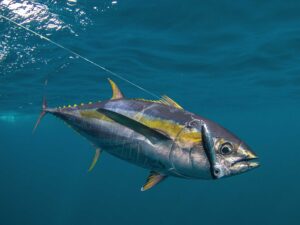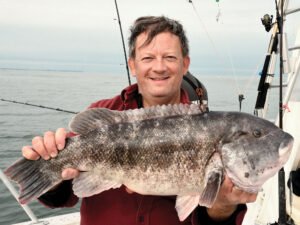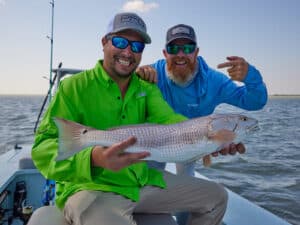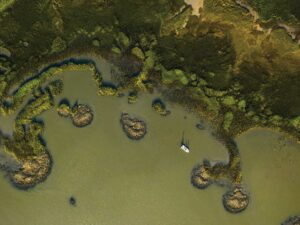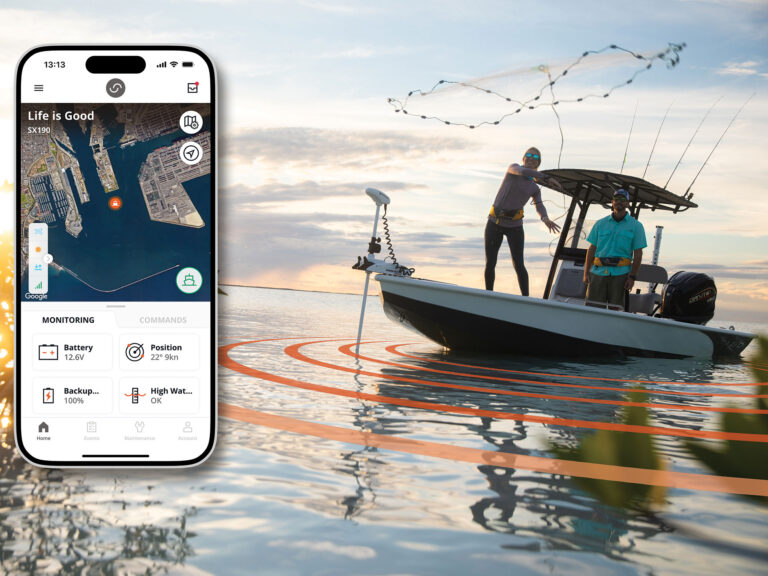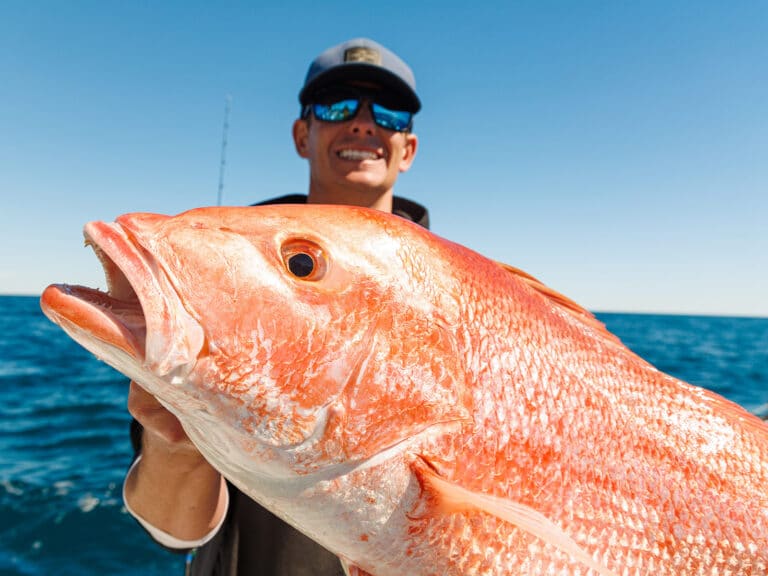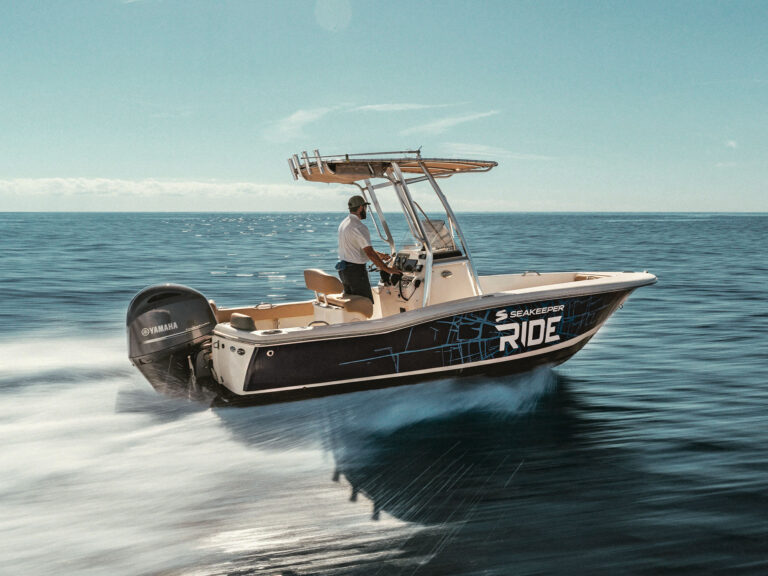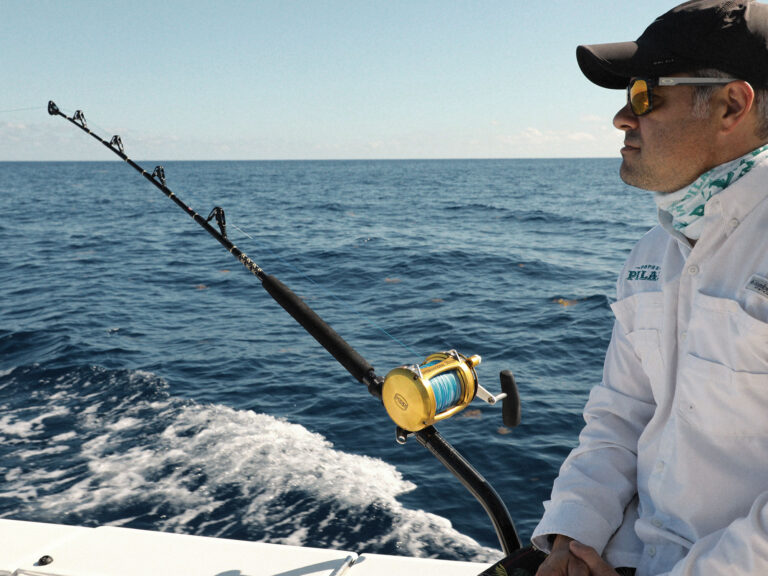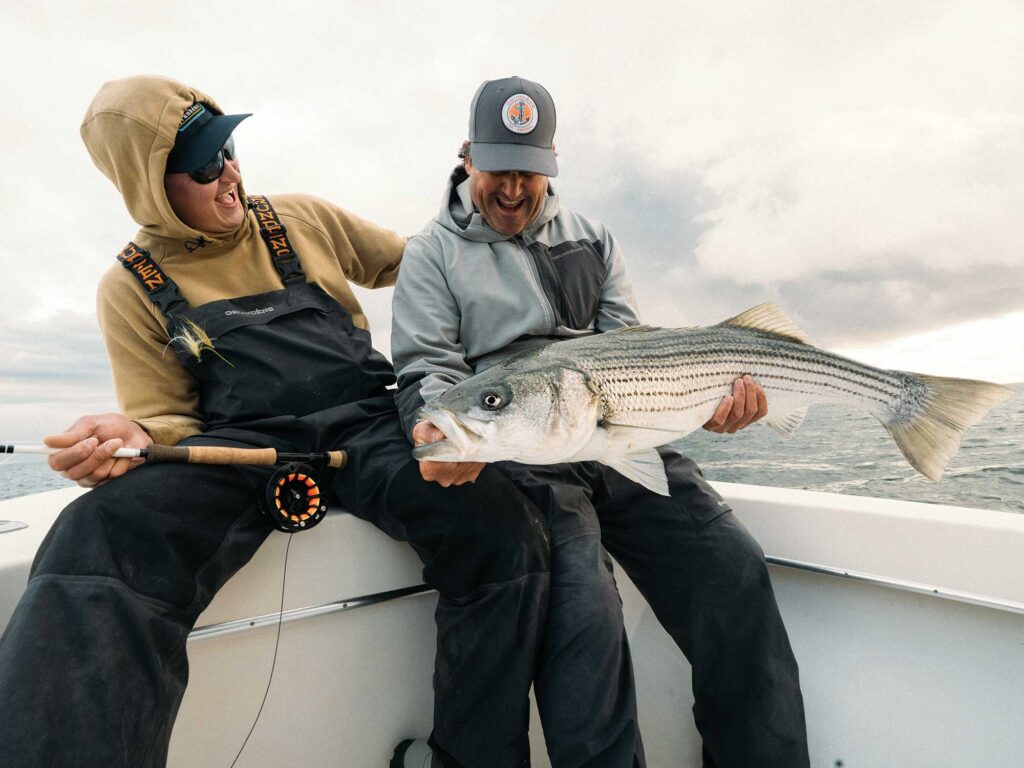
For many fisheries, this month is the time to catch fish in transition before they settle into summer patterns. Striped bass, big red drum and cobia are on the move in the Atlantic, and intercepting migrating schools leads to fast action. Meanwhile in South Texas, mangrove snapper are hitting topwaters. Here’s a glimpse at some excellent options for May.
Spring-Run Stripers
The storied Montauk striped bass run fires up in May, and Capt. Tim O’Rourke, of Montauk Point Fly Fishing, says fishing gets better and fish get bigger through the month. Best of all, spring offers great fishing without the crowds of the fall run. “Spring is the new fall,” O’Rourke jokes. “I don’t think I should be talking about it.”
O’Rourke starts the day searching for working birds and schools of bait on current rips and rock piles near the beach.
Early in the season, fish key on squid and menhaden. By the end of May, stripers turn their attention to porgy. O’Rourke chooses fly colors to match the available bait. “I like a bunker fly with weighted eyes on a 4/0 hook,” he says.
Once he finds signs of fish, O’Rourke starts his drift well up-current of the structure to give the fly time to sink to the depth of the fish.
When the sun is out and the sky is clear, O’Rourke targets striped bass on shallow flats. “I’m poling a skiff and looking for bass in 2 feet of water,” O’Rourke says. Spring’s clear water makes it easier to spot bass. To tempt them, O’Rourke throws a Clouser colored to match crabs or shrimp on a 3/0 hook. “May is the best time of year because the fish are moving in, and they are hungry and aggressive,” O’Rourke says.
Schooling Dixie Reds
Southeast Virginia anglers are excited for the annual return of big red drum to the Chesapeake Bay. The spring run starts in April and continues through June, with a May peak.
Schools of 40- to 50-pound red drum hunt shallow shoals at the mouth of the bay. Anchor along a sharp drop-off and fish a whole blue crab on a fish-finder rig with an 8/0 circle hook and an 8-ounce pyramid sinker. Position baits from shallow to deep and wait for a school to pass through. When the bite is hot, every rod is bowed.
As the month progresses, anglers target reds along pilings and rock islands of the Chesapeake Bay Bridge Tunnel. Use side-scanning sonar to locate fish in the structure, then bounce a 2-ounce jig head and 7-inch swimbait along the bottom. When a big drum takes the bait, use the boat to steer the fish away from structure.
By the end of May, anglers spot huge schools of drum on the surface. Approach slowly, and stay as far away as possible. Cast a 2-ounce bucktail ahead of the school and work it in the path of the red herd.
Sight-Cast to Florida Cobia
Cobia arrive off Northeast Florida the last week in April and are greeted by excited cobia anglers. Capt. Tim Altman, of Hoodoo Charters, says: “Sight-casting for cobia brings people from miles away with 10-foot ladders strapped to their skiffs.” Anglers perch atop ladders for a better view to spot cobia.
Altman says early May is prime time. He searches from the surf to 50 feet of water between Jacksonville and Cape Canaveral. Altman looks for manta rays near the surface. “The rays are usually accompanied by a pack of cobia,” he says.
When he spots a cobia, Altman casts a 2-ounce bucktail at the fish. If the cobia doesn’t respond, he follows up with a live menhaden.
Topwater Texas Mangos
Capt. Brian Barrera, of South Texas Saltwater Experience, is anxious for the early-season mangrove snapper run. “When the fish arrive in May, I target them with surface lures,” Barrera says. ¶ In spring, mangos abandon deep structure to hang under docks, sea walls and moored ships. To draw the fish into the open, Barrera works a small, loud, walk-the-dog topwater parallel to structure. “The noise and commotion attract the fish,” he says.
When the weather is too rough to position his boat close to structure, Barrera switches to a float rig with a live mullet on a weightless hook. “The live bait stays in the strike zone to entice a snapper into the open,” he says.
Persistence is a virtue when targeting mangos on the surface. “The first cast gets the fish’s attention, the second cast brings it out, and the third cast gets a bite,” Barrera says.

